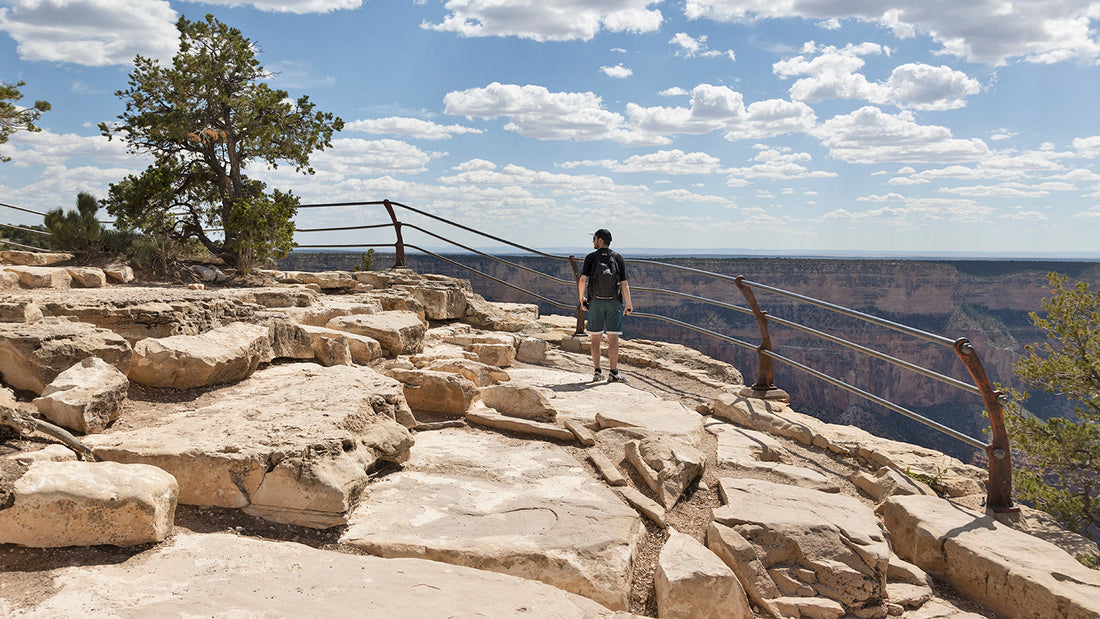
🚍 Grand Canyon Shuttles, Viewpoints & Photo Timing: The Complete Guide
Share
The Grand Canyon is one of the most breathtaking natural wonders on Earth — but it’s also massive and can be overwhelming to navigate. With limited parking, long distances between viewpoints, and millions of annual visitors, knowing how to get around, where to stop, and when to go for the best photos makes all the difference.
This guide covers everything you need:
- How the shuttle bus system works
- Which viewpoints are best for sunrise, midday, and sunset
- Tips for catching the canyon in the perfect light
- Insider advice for both the South Rim and North Rim
Let’s make sure you spend less time stressing over logistics — and more time soaking in those jaw-dropping views.
🚏 Table of Contents
- 🚍 Understanding the Grand Canyon Shuttle System
- 📸 Best Grand Canyon Viewpoints for Photos
- 🌲 What About the North Rim?
- 🧭 Practical Tips for Combining Shuttles + Viewpoints
- 🏁 Final Thoughts
🚍 Understanding the Grand Canyon Shuttle System
The South Rim shuttle system is free, easy to use, and essential if you want to see multiple viewpoints without battling for parking.
✅ Why Shuttles Matter
- Reduce traffic and protect the park’s fragile environment.
- Save you the headache of finding parking (lots fill up quickly).
- Convenient — buses run every 10–15 minutes.
📅 Operating Seasons
- Most shuttles run March through late November.
- In winter, you’ll need to drive yourself — Hermit Road reopens to private vehicles.
🚍 Shuttle Routes
-
Village Route (Blue)
- Connects lodges, Market Plaza, and the Visitor Center.
- Useful for getting around the central hub.
-
Hermit Road Route (Red)
- Runs from Grand Canyon Village to Hermit’s Rest.
- Accesses 9 scenic viewpoints.
- Shuttle-only March–November.
-
Kaibab Rim Route (Orange)
- Links the Visitor Center with Yaki Point and South Kaibab Trailhead.
- Best for sunrise views.
🚏 Tips for Riding Shuttles
- First-come, first-served seating — lines form at sunrise and sunset.
- Shuttles have bike racks (great if you want to cycle part of the route).
- Grab a route map at the Visitor Center or download it before arriving.
📸 Best Grand Canyon Viewpoints for Photos
The canyon looks different depending on the time of day. Here are the must-see viewpoints and when to visit them for the best photos.
🌅 Best Sunrise Spots
-
Mather Point
- Just steps from the Visitor Center.
- Wide amphitheater views.
- Popular and crowded — arrive early for a front-row spot.
-
Yaki Point
- Accessed via the Orange Shuttle.
- Panoramic views with fewer people.
- Fantastic for capturing the first glow over the canyon.
-
Desert View Watchtower (drive only)
- Located 23 miles east of Grand Canyon Village.
- Amazing perspective with the Colorado River winding through.
- Worth it if you’re entering from the east entrance.
🌞 Best Midday / Daytime Viewpoints
-
Grandview Point
- Expansive vistas — perfect for wide-angle shots.
- Less crowded than the main overlooks.
-
Moran Point
- Great for geology lovers — colorful rock layers are visible here.
-
Pima Point (Hermit Road)
- Offers sweeping views of the Colorado River.
- Fantastic for long-lens shots of rapids below.
🌇 Best Sunset Spots
-
Hopi Point
- Known as the best sunset spot on the South Rim.
- Panoramic westward views — watch the sun dip behind the horizon.
- Very popular — plan ahead.
-
Pima Point
- A quieter alternative with river views.
- Excellent for capturing glowing canyon walls post-sunset.
-
Yavapai Point
- Wide views + a nearby geology museum.
- A good mix of accessibility and scenery.
⏰ Timing Your Photos for the Best Light
Lighting transforms the Grand Canyon. Knowing when to shoot makes all the difference.
- Golden Hour (sunrise & sunset): Warm tones, dramatic shadows, and glowing rock faces. Best for landscape photos.
- Midday: Light is harsh but great for showing the canyon’s depth and contrasting layers.
- After Sunset: Stay 20–30 minutes longer. The canyon often glows with soft pastel colors once the crowds leave.
📅 Seasonal Differences
- Summer: Longer days, sunsets around 7:30–8:00 pm. Hot temps midday.
- Winter: Softer light, fewer crowds, and snow-dusted hoodoos for contrast.
- Spring/Fall: Comfortable temps and good balance of daylight and golden hours.
🌲 What About the North Rim?
The North Rim is far less crowded but also less developed. It’s only open from mid-May to mid-October, and there’s no shuttle system.
🚗 How to Explore
- You’ll need to drive yourself. Roads are well-paved but remote.
- Limited lodging — book well in advance.
🌄 Best North Rim Viewpoints
- Bright Angel Point: A short walk from the lodge, offering sweeping canyon views.
- Cape Royal: Incredible sunset spot with a wide-angle perspective of the canyon and the Colorado River.
- Point Imperial: The highest viewpoint in the park — fantastic morning light.
🧭 Practical Tips for Combining Shuttles + Viewpoints
- Start early: Catch sunrise and avoid crowds.
- Use Orange Route for sunrise, Red Route for sunset.
- Bring layers: Mornings and evenings can be chilly, even in summer.
- Carry water and snacks — food options near viewpoints are minimal.
- Download maps: Cell service is spotty.
- Don’t rush — 2–3 viewpoints per outing is enough to truly enjoy.
🏁 Final Thoughts
The Grand Canyon is vast, and without a plan, it’s easy to miss its best moments. By using the shuttle system, focusing on the right viewpoints, and timing your visits for the perfect light, you’ll capture the canyon at its most magical.
Whether it’s watching the sun rise at Yaki Point, marveling at the river from Pima Point, or catching a glowing sunset at Hopi Point, every viewpoint gives you a new perspective on one of the world’s greatest wonders.
📥 FREE Grand Canyon Shuttle & Viewpoints Guide (PDF)
Want to take this info with you? Download this blog post as a FREE PDF guide so you can keep it handy offline inside the park. Click here to get it!
📚 Plan Your Adventure with the Southwest USA RoadBook
The Grand Canyon is just one highlight of the Southwest. My Southwest USA RoadBook includes complete itineraries, mapped-out shuttle stops, photo tips, and nearby parks like Zion, Bryce, and Arches. Get your RoadBook here.
